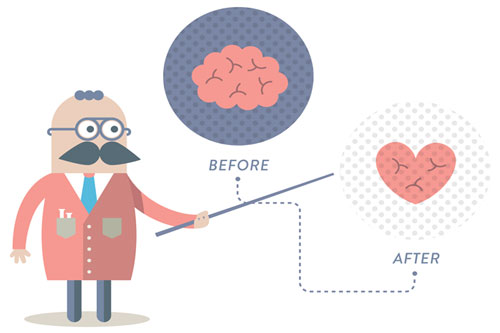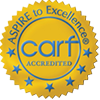As a clinician at Welwynn Outpatient Center, I am known as a “Jane of all Trades” because of my background in multiple modalities of healing: I am a mental health clinician, massage therapist, and yoga teacher. In the group therapy sessions I lead on Saturday, we meditate and practice simple yoga and relaxation techniques in addition to traditional talk-based activities. Clients are typically quick to embrace the mind-body relaxation tools that I teach in group simply because they work! I’ve had clients say things like, “I feel like I just took a Valium,” or “I feel so relaxed, but I can still think clearly!” People in recovery from addiction have gotten so used to “self-medicating” their distress that they have crippled their ability to calm themselves without substances. Learning to have more control over the nervous system and emotions is enormously important for recovery.
The tricky part is getting clients to do these effective practices at home, where they would need to carve out quiet space and time, and would not have my voice to guide them into presence. We’ve been experimenting with using technology-assisted mindfulness, and I’d like to share what we’ve found.
HEADSPACE APP:
There are several apps which contain guided meditation programs. I chose Headspace because of it’s free “Take Ten” program, which teaches you the basics of meditation in 10 minutes a day for 10 days. After the Take Ten program, you can subscribe to the app and have access to many more 10-15 day meditation “courses” on topics from sleep to sports to relationships. After the free intro, I chose to subscribe to the app, and it really has made a huge difference – I feel happier and calmer throughout the day when I mediate in the morning with Headspace. You can check out other apps here is you are curious about other options.
INSIGHT TIMER APP:
I also tell our clients about Insight Timer because it is free. There are thousands of free guided meditations by respected teachers. The ones for falling asleep are especially useful. You can also set a timer to do your own unguided meditation practice. The downside of Insight Timer is that there are no organized courses or progressions of lessons: the Headspace Take Ten program is my preference for someone new to meditation.
SPIRE:
The Spire is a wearable biofeedback device that tracks your breathing and can tell if you are feeling “calm,” “tense,” or “focused” based on the rhythm and depth of your breath. It’s relatively inexpensive ($129.95, and you can usually find a coupon) and gives the user great information about what types of activities and interactions are triggering their stress response. The accompanying app also includes many useful guided meditations. At Welwynn, all clients are asked to complete the free Headspace Take Ten program. After that, they have access to our library of Spires, which they can borrow for a week at no charge as a way to gain self-awareness about their patterns of stress, calm, and focus.
A fun example: One client learned that she gets tense every time her husband enters the room – something she had never been aware of before! With that information, we could explore further the thoughts, emotions, and behaviors which create the unnecessary stress. The Spire is an excellent adjunct to psychotherapy, and can also be useful for anyone who’d like to live a calmer, happier life.
For many people, it’s easier to use an app or a device than to consistently attend meditation or yoga classes or attempt to “just sit and meditate” on their own. I encourage you to try out these technologies out for yourself!









